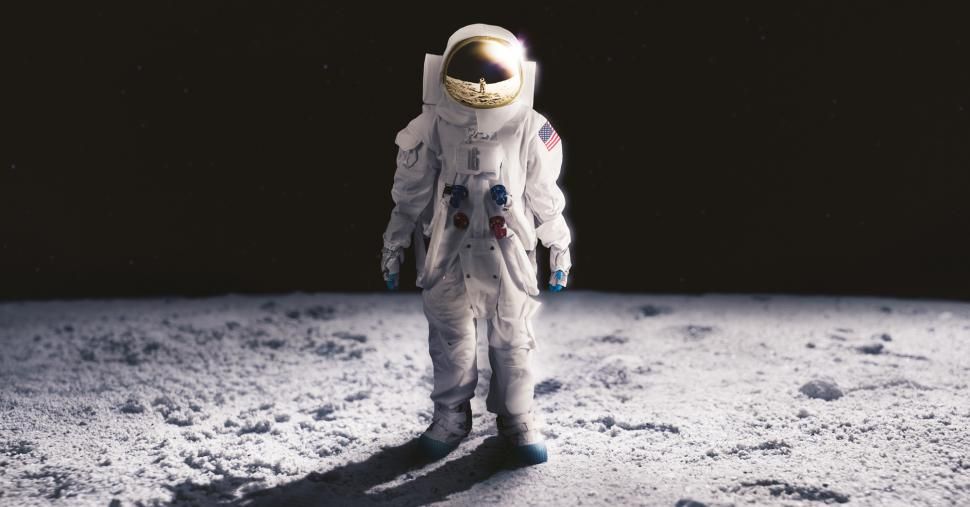‘We choose to go to the moon!’ declared President John F. Kennedy in 1962. Just seven years later this declaration became a reality, with Neil Armstrong taking a giant leap into the history books as the first man on the moon.
Around 600 million people sat down in front of their televisions to watch this incredible event, which celebrated its fiftieth anniversary this year. They felt fortunate to be involved in something with such historic and scientific significance, and can still recall the excitement of the time with very few people not familiar with Armstrong’s famous words — ‘That’s one small step for man, one giant leap for mankind.’ Yet few know what went on behind the scenes; the nineteenth century scientific principles without which Armstrong and Aldrin would certainly have not survived the mission.
Due to the extreme temperatures on the surface of the moon, which range from 260 degrees Fahrenheit in the day to minus 289 Fahrenheit at night[1], man cannot survive; the human body only works well within a particular temperature framework, which definitely does not incorporate such extremes. As such, in order to survive, how could Armstrong and Aldrin’s temperature be regulated in such a variable environment? Enter the laws of thermodynamics; one of which played a huge part in keeping Armstrong and Aldrin cool.
The crew was kitted out in a three-layer Liquid Cooling and Ventilation Garment (LCG), which used water from a Portable Life Support System (PLSS) backpack[2] to cool the astronauts. The LCG incorporated plastic tubing to allow the circulation of the water, which was cooled in the PLSS by a sublimator. This is where the second law of thermodynamics plays its part; heat transfer cannot spontaneously occur from lower to higher temperature bodies, meaning a middle-man is required to cool the water flowing around the astronaut’s LCG. This middle-man is the sublimator; a device in the PLSS that works on the principle of sublimation, turning a solid (ice) into a vapour, bypassing the liquid phase. The astronaut controlled the temperature range, and if the water flowing under the sublimator warmed to higher than this range, ice in the plate would thaw, sublimate into space, removing the heat with it. So, thanks to thermodynamics, Armstrong and Aldrin stayed cool in space, and have remained cool over the five decades since their incredible mission.
Consider the International Space Station and the extreme atmospheric conditions it encounters; where hot is very hot, cold is too cold, hot air doesn’t rise, heat doesn’t conduct, there is no air for convection, where objects are cooled by emitting a type of radiation and warmed by absorbing sunlight. A thermodynamic puzzlement!
The ISS has been built to take all these factors into consideration. The result? A controlled thermally balanced Station. Most of the ISS is covered in radiation-thwarting multi-layer insulation, comprising layers of aluminised reflective silver mesh, such as that wrapped around athletes at the end of a marathon, which prevent the penetration of radiation. Layers of polyester keep the sheets of mesh separate, preventing heat from being conducted, and kapton; polyamide film that remains stable across a wide range of temperatures; protects the delicate mesh. That’s one problem sorted, but how to keep the inside of the Station at a temperature suitable for delicate humans is another conundrum, as the layered insulation results in constantly rising internal temperatures.
This brings us back round to heat exchangers and sublimation; the principles implemented within Armstrong and Aldrin’s suits, although this time it’s not quite so simple (if it could ever be described as such). Pipes would have to circulate around the outside of the Station, and thanks to those extreme temperatures, the water would certainly freeze. In order for it to work, engineers had to implement another heat exchange, with waste heat exchanged to another loop containing ammonia instead of water. Ammonia freezes at minus 107 degrees Fahrenheit, but as (in this case) it is heat-bearing it is unable to reach this freezing point; the liquid is quickly circulated back into the Station, where it is much warmer.
With these extremes of temperatures, it seems sensible to assume that at some point, the ISS would experience temperatures of absolute zero. This, however, isn’t so. Absolute zero has been calculated as minus 459.67 degrees Fahrenheit –– meaning that the mild moon temperature of minus 289 Fahrenheit is far from absolute. Even in deepest darkest outer space, one cannot get below minus 455 degrees Fahrenheit, meaning there is no requirement to implement that dreaded third law of thermodynamics — investigating how systems will behave when they reach this impossible temperature.
Isn’t space cool?
